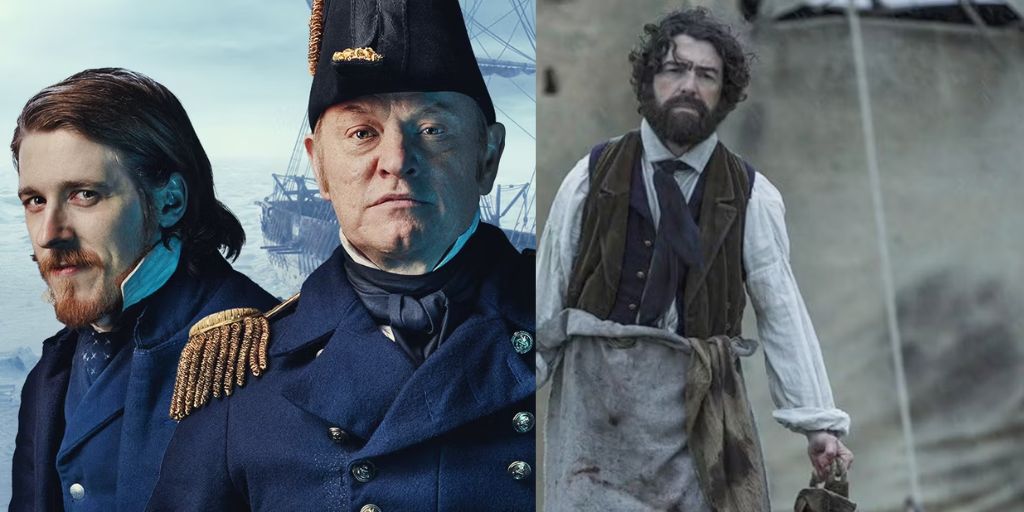After an almost perfect nine episodes, AMC’s historical horror series, The Terror, delivered a powerful final episode titled “We Are Gone.” This episode was intense, gripping, and deeply emotional.
It showcased the final fate of Captain Crozier’s (Jared Harris) men from the Franklin Expedition, concluding their tragic journey in one sweeping moment.
The previous episode saw the deaths of beloved characters Fitzjames (Tobias Menzies) and Blanky (Ian Hart), but the finale shifted focus more toward tragedy while still honoring the lives lost on this ill-fated journey.
The Emotional Weight of Hope
David Kajganich, co-showrunner and executive producer, shared his insights on the emotional depth of the series. He explained, “The men who were actually on this expedition, they would have had hope for a very long time and many of them probably until the moment of death.
With that hope comes the retention of one’s whole personality, your sense of humor, your sense of irony, your spirit of generosity.” He emphasized that even during this disaster, the warmth of these characters should not be lost. This perspective is essential to understanding the motivations and actions of the characters as they show their harrowing experiences.
Collider had the opportunity to interview Kajganich and Soo Hugh, the other co-showrunner and executive producer, about the finale and saying goodbye to these richly developed characters.
With so much devastating content covered in the finale, the discussion focused on three of the most haunting sequences: Dr. Goodsir’s death, the chilling moments at Starvation Cove, and the calm yet impactful final frames of the episode.
Dr. Goodsir’s Heartbreaking Journey
Dr. Goodsir was a character who stood out for his commitment to saving his shipmates from lead poisoning. He struggled to protect them, and when he could not save them, he desperately wanted to uphold his Hippocratic Oath, which emphasizes a doctor’s duty to help others.
However, the dire circumstances he faced forced him into impossible choices. Under Hickey’s command, he was ordered to carve up a murdered man for dinner, a task that violated everything he believed in. Ultimately, he made the tragic choice to become a killer himself, sacrificing his life in an attempt to end Hickey’s mutinous reign.
In a desperate act to save those still alive, Goodsir used poison to set a deadly trap for those who conceded to cannibalism. Tragically, his sacrifice did not yield the desired outcome. The scheming of men and the unforgiving forces of nature thwarted him.
Paul Ready’s performance captured the essence of Goodsir’s moral conflict and emotional turmoil, making him a character that viewers loved. His final moments were heart-wrenching, and they left a lasting impact on the audience.
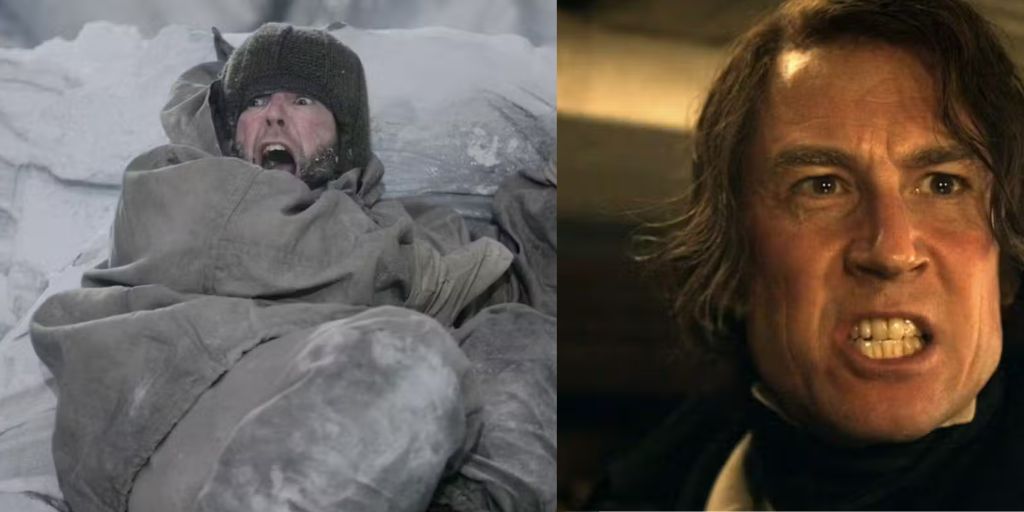
As his body shook and seized, viewers were shown a glimpse of his final thoughts—flowers, a shell, a crystal—representing the beauty of the natural world.
These images stood in stark contrast to the horror surrounding him. While his death might seem peaceful in comparison to the chaos of the expedition, Kajganich explained that a tragic undercurrent runs through this scene.
He remarked, “What a puzzle to figure out how to show that to an audience. We had a rule that we wouldn’t protect any of the characters from sentimentality or unflattering truths.” This meant showcasing Goodsir as a man who found comfort in the natural world and in human relationships.
In his last moments, he remembered the beauty of nature rather than the people he had known. This detail adds depth to his character’s journey, making it even more tragic.
Starvation Cove: A Gruesome Revelation
One of the most memorable moments in the finale occurs in the last act when Crozier retraces the steps of the men he had to leave behind. Lady Silence senses the death of Tuunbaq and tries to revive it with water from her canteen, but it is too late.
Crozier, still alive, finds himself in a desperate situation. Unable to break his chains, Lady Silence cuts off his hand to free him. Together, they follow the path of Crozier’s men, discovering devastation and death at every stop.
Each discovery is painful. Jobson, Crozier’s loyal man, died believing his captain abandoned him, a heart-wrenching moment that adds to the emotional weight of the narrative.
However, the most haunting image is of Edward, who is alive yet dead-eyed, with chains strung through his face. This shocking visual encapsulates the brutal reality the men faced.
Hugh explained that this imagery came from actual Inuit testimony, which gives it an added layer of authenticity. “It’s interesting; we’ve received many social media questions about that imagery.
We debated how much to reveal, but we wanted to highlight that moment because it was so haunting and ambiguous.” This commitment to authenticity is evident throughout the series and enhances the emotional impact of the story.
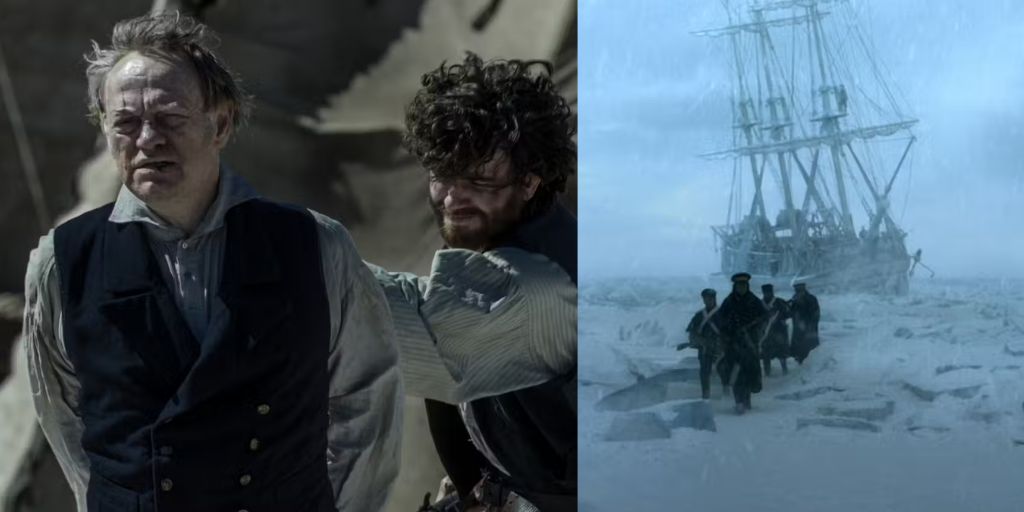
Kajganich further elaborated that an Inuit mother and son discovered a body in a tent rigged with chains, an essential detail that adds to the series’ dark atmosphere.
They wanted to show viewers what happened to Crozier’s men at Starvation Cove, a camp plagued by disease and cannibalism.
Kajganich explained their approach: “We wanted to give viewers a visual sense of what those last months must have been like for the men. They faced lead poisoning, starvation, and other ailments, which led to a dark fate.”
Their intention was to convey both the reality of the men’s suffering and a sense of mystery about their fate. This nuanced approach helps the audience connect with the characters on a deeper level, even in the face of horror.
The Haunting Legacy of Starvation Cove
Starvation Cove symbolizes the ultimate tragedy of the expedition. It is here that the bulk of the men from the Franklin Expedition perished under unimaginable circumstances.
Kajganich shared, “We decided that if we were going to stay with Crozier and his experience of those last months, we wanted to ensure that when he finally catches up to the last camp at Starvation Cove, we see visually what the tenor of those last weeks and months must have been for them.”
The imagery presented in Starvation Cove is haunting. The evidence of cannibalism and the suffering endured by the men emphasizes the depths of human desperation. Kajganich explained, “We wanted to show that, but we didn’t want to prioritize any one thing.
We aimed for a collection of images that would leave you with enough answers to what those men probably went through, while also maintaining a kind of holy ambiguity about it.”
This blend of clarity and ambiguity adds to the series’ complexity. It allows viewers to grapple with the moral implications of survival in extreme circumstances.
Hugh added one last thought on the sequence in Starvation Cove, suggesting that audiences should pay close attention to Lady Silence’s expressions as she surveys the chaotic violence of the scene.
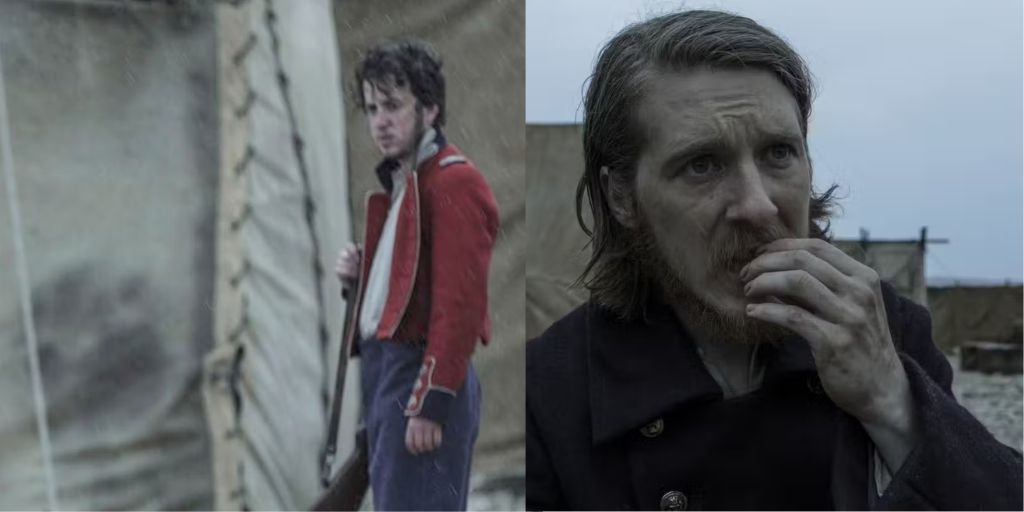
“I think the shot of that sequence is actually the final shot of Lady Silence watching Crozier watch Edward. The look that Nive has in that moment is amazing.
She just has this look of—her face is like, ‘And you call us “the other”? Look at what has happened to these men,’ and it’s so powerful.” This observation adds another layer to the narrative, highlighting the tension between cultures and the human experience in dire situations.
Crozier’s Final Moments: A New Beginning
In the end, we bid farewell to Crozier, a captain who has lost all his men, facing overwhelming odds. With no one left to lead, he follows Lady Silence, also known as Silna, to an Inuit camp where he begins a new life.
Lady Silence faces her own consequences for losing Tuunbaq, and Crozier cannot follow her. He settles into the community, warning future shows about the horrors of The Terror.
As the series comes to a close, Kajganich reflects on the fate of Crozier: “We loved the idea that Crozier survived in an unexpected way.
Lady Silence is asked to pay for the chaos caused by these men, and Crozier realizes that returning to England would only mean failure for him.” This insight underscores Crozier’s character growth throughout the series.
Kajganich also discussed how the ending diverges from Dan Simmons’ book and why they opted to omit the romance between Crozier and Lady Silence. “We didn’t want Lady Silence to serve any other arc in the show but her own. But we thought that child was important, because it shows the level of trust and comfort they have with him at that point.”
The inclusion of a child in Crozier’s final moments symbolizes hope and acceptance. It suggests that Crozier has found a place where he is valued, a significant contrast to the despair he faced during the expedition.
A Quiet Moment of Reflection
Hugh suggested that the final moment served as a quiet reward for viewers after all the chaos of the season. “That last shot could be five minutes longer.
The audience feels they earned that moment of quiet after everything they’ve experienced,” she noted. This reflection allows viewers to take a breath and absorb the weight of what they have witnessed.
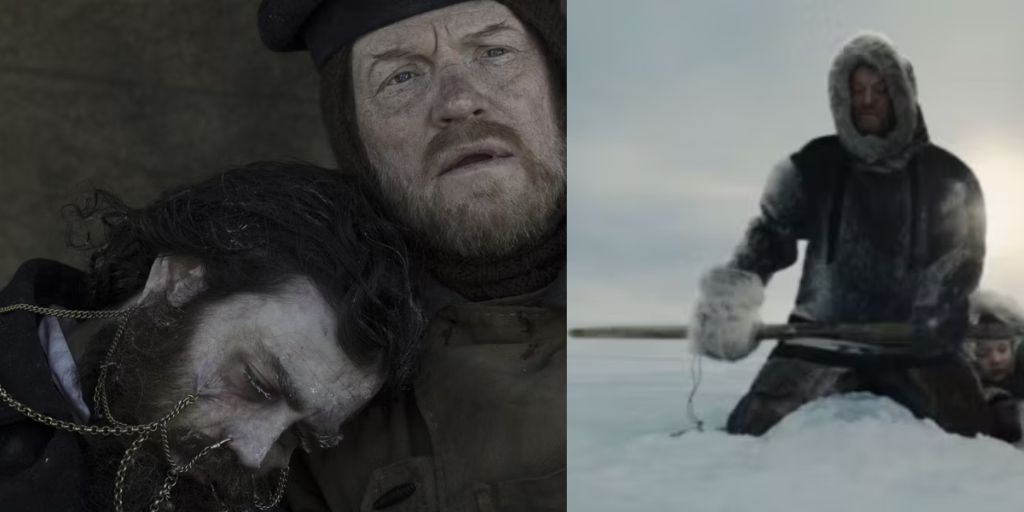
The closing scene, featuring Crozier at a seal hole, is both serene and poignant. It signifies a new beginning for him, even amidst the tragedies that preceded it. This duality captures the essence of the series—pain and beauty coexist in the human experience.
With this, Kajganich and Hugh conclude one of the best horror series in recent years. The emotional depth, strong character arcs, and haunting imagery have left audiences reflecting on the story long after the credits roll. A third season is set to release in 2025, promising to show more of the rich narrative that The Terror has become known for.
The Terror Season 1 is available for streaming on Netflix in the U.S.


